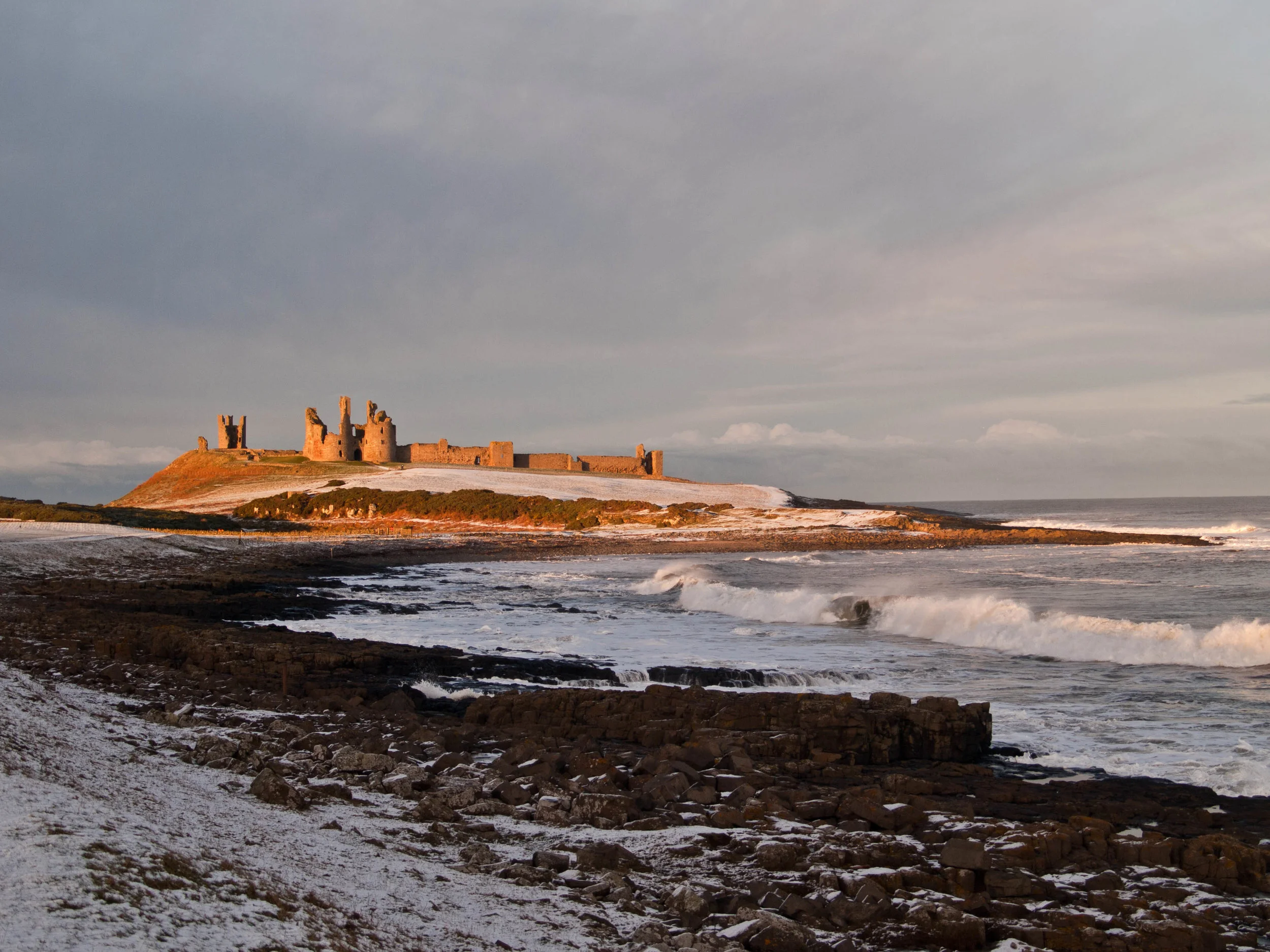Almost every week I'm asked where one of my photographs was taken or which is the best castle or beach to visit in the region, so here are my top locations to visit and photograph in the North of England.
Bamburgh
When you think of castles in Northumberland Bamburgh is right at the very top. Towering over the village which the castle took its name from Bamburgh has played an important role in the many conflicts throughout the history of Northumberland, indeed it is noted that Bamburgh during the Wars of the Roses was the first castle in England to be defeated by artillery after a 9 month siege .
Unlike other coastal castles such as Warkworth or Dunstanburgh, Bamburgh has not become a ruin and still stands pristine and defiant atop the whinsill keeping a watch up the coastline, out to the Farne Islands and beyond.
In 1838 Bamburgh became associated with one of the first Victorian heroines. Grace Darling at the age of 18 rescued with the help of her father 9 passengers and crew from the stricken Forfarshire. Grace died at a young age and is buried in the church yard in Bamburgh over the road from which is the Museum dedicated to her and her families life on the Farne Islands, this is well worth a visit.
Photography
In photographic terms the best places to photograph the castle from are the dunes either from the north or the south. The north is more accessible with parking a couple of yards from the beach and this gives the more recognizable view. It also gives more options such as using the beach, dunes and or rocks as foreground interest. If being a little more advantageous you could plan a night visit where you can see the milky way and even the northern lights.
Getting there:
Dunstanburgh, Craster and Embleton
Sitting atop the volcanic basalt rock which runs through Northumberland and County Durham, Dunstanburgh Castle as a vast ruinous monument to the medieval battles which once took place. Built by Earl Thomas of Lancaster between 1313 and 1322, the defenses were enlarged in 1380 due to the ever present threat presented by the Scots during the peasants' uprisings in 1381.
The castle was well maintained and was a strategic northern stronghold during the Wars of the Roses changing hands between rival factions of Yorkists and Lancastrians several times. The castle never recovered from the sieges of the campaigns and in the 16th century, the castle was described as having fallen into decay. With stability coming to the English-Scottish border there was no longer a need for the castle and it was sold on to the Grey family in 1608, only to be used for military purposes one further time.
In 1939 the threat from Nazi Germany was such that it was believed that the England would be invaded along the east coast. The bays just to the north of Dunstanburgh Castle were vulnerable targets for an enemy amphibious landing, and efforts were made to fortify the castle and the surrounding area in 1940, as part of a wider line of defenses erected by Sir Edmund Ironside.
The castle itself was occupied by a unit of the Royal Armoured Corps, who served as observers; the soldiers appear to have relied on the stone walls for protection rather than trenches, and, unusually, no additional firing points were cut out of the stonework, as typically happened elsewhere.[68] The surrounding beaches were defended with lines of barbed wire, slit trenches and square weapons pits, reinforced by concrete pillboxes to the north and south of the castle, at least partially laid down by the 1st Battalion Essex Regiment.
A 20-foot (6 m) wide ditch was dug at the north end of the moat to prevent tanks from breaking through and following the track south past the castle, and a 545-foot by 151-foot (166 m by 46 m) wide anti-personnel minefield was laid to the south-west to prevent infantry soldiers from circumventing the castle's defences and advancing down into Craster.[70] After the end of the war, the barbed wire was cleared away from the beaches by local Italian prisoners of war, although the two pillboxes, the remnants of the anti-tank ditch and some of the trenches and weapons pits still remain.
In 1961 the Dunstanburgh estate passed into the hands of the National Trust in which it remains to this day, and it is now also designated an area of significant scientific interest.
Photography
The castle is situated in between the villages of Embleton (to the north) and Craster (to the south). Craster is a pretty village with a small harbor and is world famous for its kippers. Approaching the castle from this direction is you will get good light both at dawn and sunset. At high tide, you can be rewarded with huge waves crashing into the rocks, but at low tide, you have the wet glistening rocks to add foreground interest.
The north side of the castle offers more opportunities for photography. You have the huge sweeping bay, high dunes and closer to the castle rocks of death (be very careful walking on these someone always manages to get hurt due to their ability to always be super slippery). The light is great just before sunrise and in the evening just before sunset.
Dunstanburgh has also become a mecca for astro landscape photographers. Due to its relative remoteness, either side of the castle can produce wonderful vistas of the castle and the night sky.
Getting there



